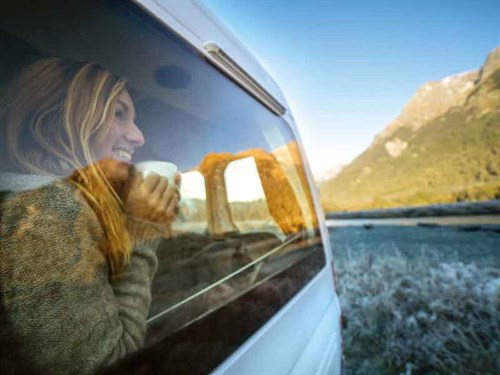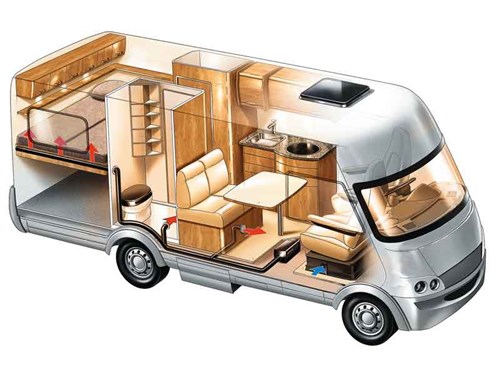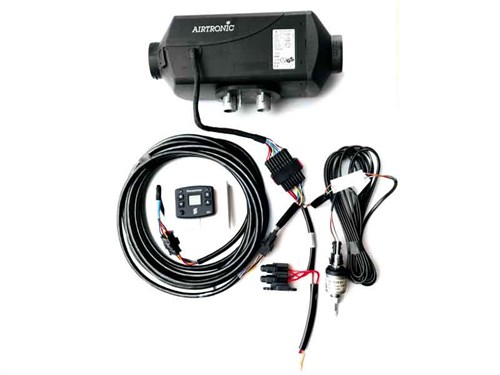Diesel heaters for RVs have gained favour in the last few years, cutting into the gas heater market share. A major reason for the diesel’s appeal is cheaper running costs; they provide more even heat than their LPG counterparts and the installed cost of the heaters are much the same.

Diesel heaters provide more even heat because of the characteristics of diesel. When an LPG heater reaches its thermostat target temperature, the heater turns off, turning on again when the temperature drops a few degrees. Unlike LPG, diesel doesn’t ignite readily.
It needs to be heated before it is ignited. So, instead of using a stop/start cycle, a diesel heater stays on throughout the heat cycle using variable fuel flow and a variable speed output fan to maintain the chosen temperature. This makes the diesel heater quieter while producing a more even room temperature.
LPG heaters
LPG heater manufacturers have responded by producing more sophisticated heaters designed to meet or beat the best the diesel heaters can offer. Good examples of this are the Truma VarioHeat eco 2800 watt and Comfort 3700-watt latest generation, compact, high-performance LPG heaters.
Used in conjunction with the digital CP controller, room temperatures can be set and maintained precisely, using a variety of fan level settings (eco, circulating air, boost function, or night mode).
They are versatile, too, and can be installed almost anywhere in your RV. Truma claims they have 15 percent more heating power and 100 percent higher flow rate than their previous models. They weigh just 5.5kg.
Going tankless

New in the US is a style of water heater known as ‘tankless’. Also referred to as ‘demand’ or ‘instantaneous’ water heaters, they do as the name says and heat water on demand. They don’t store hot water.
Turning on the tap activates the water pump and water flows into the heating unit, which activates the heater (LPG flame or 230-volt heater). It heats the water in the pipe before it flows out of the tap. Open the tap and the heater delivers a constant flow of hot water.
It works the same way as gas califonts did, which were popular with DIY enthusiasts who converted buses to motorhomes 20 years ago. Fitted with digital controllers and other tweaks added, these new heaters are more efficient and effective than before and many are packaged to suit different installation situations.
Typically, these new heaters produce between seven and 15 litres of hot water per minute depending upon the heat rating of the unit. Generally, LPG units produce higher (hotter) flow rates than electric ones.
Higher rated units are needed for RVs with multiple hot taps in use simultaneously. Look for the BTU (British Thermal Unit) input and the efficiency ratings. They reflect the flow rate, expressed in gallons per minute (GPM). So, the higher the BTU’s rating, the higher the water’s flow rate is likely to be.
Heaters with pilot lights waiting to ignite the burner waste LPG. Heaters with an intermittent ignition device (such as LPG hobs) instead of a pilot light save LPG.
In the US, Truma offers the AquaGo tankless water heater. It is a 60k BTU unit that can be retrofitted in place of the original Suburban, Attwood, or Girard boiler heaters commonly fitted to RVs when new.

As you will appreciate, it doesn’t look anything like the califonts of old but it uses the same principles to heat the water. The AquaGo is competitive because it is more efficient, provides a constant flow of hot water, and the unit needs less annual maintenance. Although they are not available for DIY installation, they are still proving popular with American RV owners.
Another option on offer is the Girard GSWH2 (try Amazon USA), which retails there for around $US540, including the door. It looks a lot like the Suburban it replaces and fits straight into the space previously taken by the original 12-gallon water heater.
Although it is relatively simple to install, as with all gas appliances, fitting in New Zealand would have to be done by an approved installer.
Here in New Zealand
In New Zealand, the Camec Digital Instantaneous Gas Water Heater is the only tankless water heater I’ve found. It is an LPG model with a digital controller to set the water temperature, to turn the unit on and off, to display the current water temperature, system error codes, low power and gas usage, and store the last selected water temperature setting. It is available through Camec agents.
Kevin Newton at RV and Marine Supplies tells me he has a new Suburban Nautilus IW60 ‘tankless’ due in October.
It could be worth waiting for. Winter touring in an RV is so much nicer if you have an effective air heater and plenty of hot water, so it is good to know help is at hand if you need to make a change.





